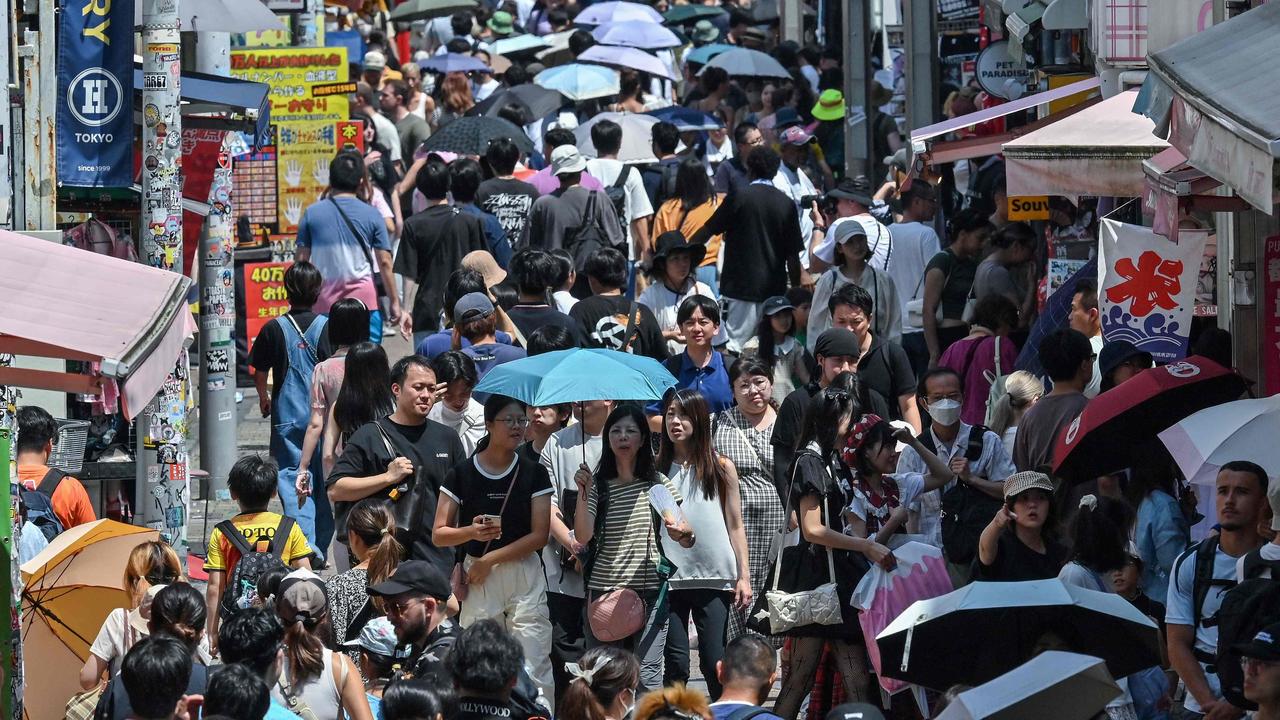It is a global problem that has gripped most countries, but Japan is among the hardest hit, with warnings that part of its population is “likely to disappear” as not enough children are born and living standards fall.
This is a big issue that governments are facing around the world, including Australia, which is currently experiencing a “recession”.
However, Japan's population has fallen for the 15th consecutive year, with a decrease of more than 861,000 people.
The number of babies born in Japan fell to its lowest level since records began in 1899 last year, and the government has warned that the next six years to 2030 could be the country's “last chance” to reverse the trend.
However, new data shows no progress, and 2023 will mark the biggest year of decline in Japan's population in a year.
Japan's population is 121.6 million, down 861,237, or 0.7 percent, from the previous year, according to the Ministry of Internal Affairs.
Despite the influx of 3.3 million foreigners, it has not helped to alleviate the population decline.
Japan, along with many other countries, is struggling to push back against falling birth rates as women around the world prioritize economic independence and express concerns about the financial impact of having children and dealing with rising living costs.
But the situation in Japan is particularly dire. A report by the Population Strategy Council is raising concerns as research shows that 744 of Japan's 1,729 municipalities are “likely to disappear” by 2050 due to population declines.
Meanwhile, Japan's population is projected to fall by 30 percent to 87 million by 2020, meaning four in 10 people will be 65 or older.
'The biggest crisis'
Prime Minister Fumio Kishida has previously described the declining birthrate as “the biggest crisis Japan faces” and warned that if the population decline is not reversed, it will be “difficult to maintain our social security system and local communities”.
The declining population could eventually lead to the collapse of the country's economy, but at the same time, it has already affected Japan.
“The labor shortage has already begun to affect various sectors and occupations, with more and more small and medium-sized enterprises closing down due to a lack of successors,” Shujiro Urata, president of the Research Institute of Economy, Trade and Industry, wrote on its website. East Asia Forum–
“Professions that provide social and public services, such as teachers, doctors, and childcare workers, are facing a severe labor shortage. The negative economic impact of population decline is also severe in rural areas. The negative economic impact of an aging population will inevitably lead to a decline in Japan’s living standards.”
As a result, Japan has struggled to attract more people to expand their families.
This includes new legislation passed in June to extend the monthly child allowance from the maximum age of 15, when many people finish junior high school, to 18, with income restrictions for parents and guardians being lifted, and changes to parental leave.
It also pours money into the project to have children.
This year, 5.3 trillion yen (34 billion Australian dollars) is earmarked for incentives to encourage couples to have more children, including by increasing childcare and education.
The government plans to increase funding for these measures to 3.6 trillion yen (AU$36.7 billion) by fiscal 2028.
Problems will follow again
However, experts have warned that the measures are aimed at people who already have children and do not address the growing reluctance to start families in a country where young people are increasingly opposed to marriage.
In 2019, Japan's household subsidy was less than 2% of GDP, compared with around 3.5% in France and Sweden, both countries with recovering birth rates. Curtin University political scientist Dr Yasuo Takao found that
However, he believes cash is not the only answer and that Japan’s conservative government cannot do the right thing as long as it adheres to traditional family values.
“The way forward is to move beyond the traditional ‘standard’ family structure and ensure that people who want to have children, whether single or married, can raise their children without financial or emotional strain,” Takao wrote in East Asia Forum This month.
“Holding on to outmoded family structures and social norms will cause problems for Japan. The current government has failed to recognize the importance of revitalizing society through diverse households and families. The government needs to embrace diversity, such as by recognizing the benefits of the same family for de facto relationships.”
Dr Meguro Yoriko, a Japanese gender equality advocate, said gender inequality needs to be addressed, arguing that “the patriarchal attitudes that persist among the men who run our organizations are the most important reason for the continued decline in births.”
Australia is facing its own problems.
Back in Australia and the “baby recession”, analysis found the national birth rate fell by 4.6 per cent year-on-year.
Births in 2023 are set to be the lowest since 2006 as cost of living pressures hit young Australians’ likelihood of having children, according to KPMG Australia.
Last year, 289,100 babies were born in Australia, a significant decrease from the 315,200 babies born in 2021 after the lockdown.
Terry Rawnsley, urban economist at KPMG, explains that weak economic growth often results in lower birth rates, but the current cost of living pressures are hitting it particularly hard.
“Birth rates provide insights into long-term population growth and the current sentiment of Australian families,” he said.
“We have not seen such a rapid decline in birth rates in Australia since the 1970s depression and inflation, which coincided with the widespread use of contraceptives,”
He added that current financial pressures were causing Australians to delay starting or expanding families, but there were also long-term concerns.
Mr Rawnsley added that the overall fertility rate had been falling over the long term, from more than two children per woman in 2008 to 1.6 in 2023.
